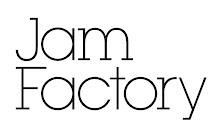Tell us about the
Creative Director’s Choice Exhibition.
I’ve chosen seven people for this exhibition. I think seven
is a good number for this space. Each of these artists are people whose work
I’ve followed for a long time, and really enjoyed watching the scope of how
they approach their practice, and how their work reflects their personality.
It’s work that I really admire. There are many many fantastic ceramic artists
in Australia
I think all this work is really contemporary, but there is
no theme for the exhibition. It’s just people who I really admire and respect.
 |
| Helen Fuller |
I wasn’t looking for any particular style. I’m just looking
for an individual approach to actually working with the material in an
inventive way. There are some methods in common, but I think there’s something
about a person sitting with the clay material and just exploring it that is
reflected really strongly in these pieces of work. I feel each person has taken on a great
challenge with the material. They may have started with a traditional
technique, but they’ve actually extended it into a way of working that’s become
very
much their own.
 |
| Bruce Nuske |
It’s interesting because they are working in the field of
ceramics but there are influences of other visual approaches to things. There
is architecture (Susan Robey is an architect), painting (Helen Fuller is a
painter who has only recently come to ceramics). Each is working in a unique
way that reflects their own life experiences.
 |
| Amy Kennedy |
How does this
exhibition in Gallery Two compliment or fit in with HyperClay and Vitrify?
I think Vitrify and Hyperclay are exhibitions of work of a
very high standard by very developed artists in their field. Both of these
exhibitions provide an opportunity to include some wonderful work in this whole
JamFactory-wide celebration of ceramics.
 |
| Susan Robey |
These exhibitions are
timed to coincide with the upcoming Ceramics Conference in Adelaide. Can you
elaborate on that?
Yes, the ceramics conference is a wonderful opportunity to
showcase the amazing variety of ceramics that are made here in Australia. We
have these fantastic gallery spaces here and so it’s an opportunity for all of
the ceramic artists who are coming to South Australia for the conference to see
work of this high quality. The JamFactory is playing a very particular role in
showcasing this level of work.
 |
| Louise Boscacci |
You are also on the
judging panel for Vitrify. Can you tell us about the award and the exhibition?
From a very highly competitive field, numerous ceramic
artists entered from all over Australia and we, the three judges, Noel
Franklin, Robert Reason and myself, poured
over the entries. We had many images to
look at and eventually decided on Stephen Bird, Tania Rolland, Neville French
and Julie Bartholomew as the finalists. Three from NSW and Neville French is
from Victoria. We chose them on the quality of their work, the inventiveness of
their approach and also on the description of what they were planning to do
should they be awarded a place in the final. Each had to provide a proposal of
what they would create for a joint exhibition.
The three judges are all from different backgrounds; Noel
Franklin is head of the School of art in Hobart, Robert Reason is the Curator
of European and Australian Decorative Arts in the Art Gallery of South
Australia, and I’m a Ceramic Artist and I’ve been a teacher for thirty years,
so we all come from different backgrounds but we all have a strong love of
ceramic art, and so working together as a team has been very interesting. The
quality of work that’s been sent in for the final is very high and diverse.
Just having this first initial look it’s going to be a very tough competition
to decide who will be the final winner.
The quality, the technical expertise, the inventiveness and
the personality in each of the artist’s work is quite extraordinary, so it’s
yet another exciting exhibition here at JamFactory.
 |
| Stephen Bird |
Can you tell us about the artists selected?
Tania Rolland’s work has a very graphic quality. There is a
beautiful essence of drawing and its
integration with ceramic form and materials.
The work of Neville French has a soft sculptural sort of ethereal landscape quality
to it, reflecting his inspiration of the landscape at Lake Mungo. Both Tania and Neville’s work is very strong
and interesting.
 |
| Tania Rolland |
 |
| Neville French |
Julie Bartholomew’s work is about showcasing
a hundred distinct critically endangered Australian flowers. These
flowers are shaped from white porcelain
and held in a petri-dish-like container, suspended off the floor. They just
make you want to explore, and also reflect the sadness that all these plants are
getting lost. It’s almost as if the red glaze they are sitting in is like blood
and there’s something leaking away. It’s
very strong and poignant as an installation.
 |
| Julie Bartholomew |
Stephen’s work is extraordinary. It makes reference to the
European ceramic traditions that relate to his origins in North Staffordshire
in the UK. Stephen uses humor and
propaganda, and depicts meaningless violence to make observations about issues
including politics, cultural imperialism and the global power struggle. It’s extraordinary work! For example, the paint tray and a whole
collection of objects that are so beautifully made that they look like you
could just pick them up and use them. It’s technically very impressive, but the
underlying story behind it is also quite intriguing and challenging.
 |
| Stephen Bird |
Vitrify is showing at
JamFactory in CollectorSpace and the Showroom on level one until 1 October,
with the winner being announced Friday 28 September.






